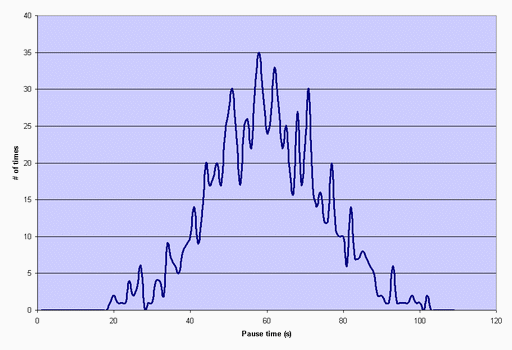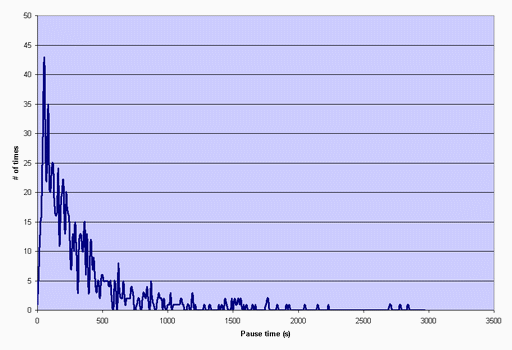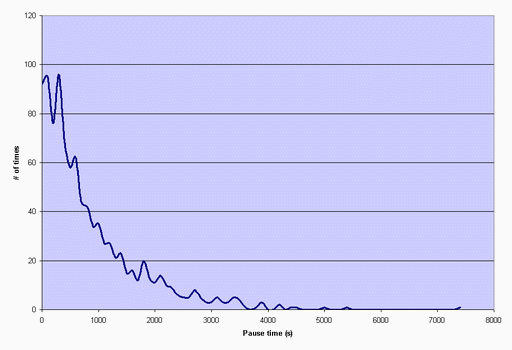Create your own XML scenarios¶
Of course embedded scenarios will not be enough. So it’s time to create your own scenarios. A SIPp scenario is written in XML (a DTD that may help you write SIPp scenarios does exist and has been tested with jEdit - this is described in a later section). A scenario will always start with:
<?xml version="1.0" encoding="ISO-8859-1" ?>
<scenario name="Basic Sipstone UAC">
And end with:
</scenario>
Easy, huh? Ok, now let’s see what can be put inside. You are not obliged to read the whole table now! Just go in the next section for an example.
There are many common attributes used for flow control and statistics, that can be used for all of the message commands (i.e., <send> , <recv> , <nop> , <pause> , <sendCmd> and <recvCmd> ).
List of attributes common to all commands¶
| Attribute(s) | Description | Example |
|---|---|---|
start_rtd |
Starts one of the ” Response Time Duration” timer. (see statistics section). | <send start_rtd="invite">
the timer named “invite” will start when the message is sent. |
rtd |
Stops one of the 5 ” Response Time Duration” | <send rtd="2">
the timer number 2 will stop when the message is sent. |
repeat_rtd |
Used with a rtd attribute, it allows the corresponding ” Response Time Duration” timer to be counted more than once per call (useful for loop call flows). | <send rtd="1"repeat_rtd="true">
the timer number 1 value will be printed but the timer won’t stop. |
crlf |
Displays an empty line after the arrow for the message in main SIPp screen. | <send crlf="true">
|
next |
You can put a “next” in any command element to go to another part of the script when you are done with sending the message. For optional receives, the next is only taken if that message was received. See conditional branching section for more info. | Example to jump to label “12” after sending an ACK: <send next="12">
<![CDATA[
ACK sip:[service]@[remote_ip]:[remote_port] SIP/2.0
Via: ...
From: ...
To: ...
Call-ID: ...
Cseq: ...
Contact: ...
Max-Forwards: ...
Subject: ...
Content-Length: 0
]]>
</send>
Example to jump to label “5” when receiving a 403 message: <recv response="100"
optional="true">
</recv>
<recv response="180" optional="true">
</recv>
<recv response="403" optional="true" next="5">
</recv>
<recv response="200">
</recv>
|
test |
You can put a “test” next to a “next” attribute to indicate that you only want to branch to the label specified with “next” if the variable specified in “test” is set (through regexp for example). See conditional branching section for more info. | Example to jump to label “6” after sending an ACK only if variable 4 is set: <send next="6" test="4">
<![CDATA[
ACK sip:[service]@[remote_ip]:[remote_port] SIP/2.0
Via: ...
From: ...
To: ...
Call-ID: ...
Cseq: ...
Contact: ...
Max-Forwards: ...
Subject: ...
Content-Length: 0
]]>
</send>
|
chance |
In combination with “test”, probability to actually branch to another part of the scenario. Chance can have a value between 0 (never) and 1 (always). See conditional branching section for more info. | <recv response="403" optional="true" next="5" test="3" chance="0.90">
</recv>
90% chance to go to label “5” if variable “3” is set. |
condexec |
Executes an element only if the variable in the condexec attribute is set. This attribute allows you to write complex XML scenarios with fewer next attributes and labels. | <nop condexec="executethis">
|
condexec_inverse |
If condexec is set, condexec_inverse inverts the condition in condexec. This allows you to execute an element only when a variable is not set. | <nop condexec="skipthis"condexec_inverse="true">
|
| counter | Increments the counter given as parameter when the message is sent. The counters are saved in the statistic file. | <send counter="MsgA">
Increments counter “MsgA” when the message is sent. Each command also has its own unique attributes, listed here: |
List of commands with their attributes¶
| Command | Attribute(s) | Description | Example |
|---|---|---|---|
| <send> | retrans | Used for UDP transport only: it specifies the T1 timer value, as described in SIP RFC 3261, section 17.1.1.2. | <send retrans="500">
will initiate T1 timer to 500 milliseconds (RFC 3261 default). |
lost |
Emulate packet lost. The value is specified as a percentage. | <send lost="10">
10% of the message sent are actually not sent :). |
|
start_txn |
Records the branch ID of this sent message so that responses can be properly matched (without this element the transaction matching is done based on the CSeq method, which is imprecise). | <send start_txn="invite">
Stores the branch ID of this message in the transaction named “invite”. |
|
ack_txn |
Indicates that the ACK being sent corresponds to the transaction started by a start_txn attribute. Every INVITE with a start_txn tag must have a matching ACK with an ack_txn attribute. | <send ack_txn="invite">
References the branch ID of the transaction named “invite”. |
|
| <recv> | response | Indicates what SIP message code is expected. | <recv response="200">
SIPp will expect a SIP message with code “200”. |
request |
Indicates what SIP message request is expected. | <recv request="ACK">
SIPp will expect an “ACK” SIP message. |
|
optional |
Indicates if the message to receive is optional. In case of an optional message and if the message is actually received, it is not seen as a unexpected message. When an unexpected message is received, Sipp looks if this message matches an optional message defined in the previous step of the scenario. If optional is set to “global”, Sipp will look every previous steps of the scenario. | <recv response="100" optional="true">
The 100 SIP message can be received without being considered as “unexpected”. |
|
ignoresdp |
Ignore SDP from received message, when set to true. It will allow you to reject newly negotiated streams while keeping the old media flowing. | <recv request="INVITE" ignoresdp="true">
|
|
rrs |
R ecord R oute S et. if this attribute is set to “true”, then the
“Record-Route:” header of the message received is stored and can be
recalled using the [routes] keyword. |
<recv response="100" rrs="true">
|
|
auth |
Authentication. if this attribute is set to “true”, then the “Proxy-Authenticate:” header of the message received is stored and is used to build the [authentication] keyword. | <recv response="407" auth="true">
|
|
lost |
Emulate packet lost. The value is specified as a percentage. | <recv lost="10">
10% of the message received are thrown away. |
|
timeout |
Specify a timeout while waiting for a message. If the message is not received, the call is aborted, unless an ontimeout label is defined. | <recv timeout="100000">
|
|
ontimeout |
Specify a label to jump to if the timeout popped before the message to be received. | Example to jump to label “5” when not receiving a 100 message after 100 seconds: <recv response="100" timeout="100000" ontimeout="5">
</recv>
|
|
action |
Specify an action when receiving the message. See Actions section for possible actions. | Example of a “regular expression” action: <recv response="200">
<action>
<ereg regexp="([0-9]{1,3}\.){3}[0-9]{1,3}:[0-9]*"
search_in="msg"
check_it="true"
assign_to="1,2"/>
</action>
</recv>
|
|
regexp_match |
Boolean. Indicates if ‘request’ (‘response’ is not available) is given as a regular expression. If so, the recv command will match against the regular expression. This allows to catch several cases in the same receive command. | Example of a recv command that matches MESSAGE or PUBLISH or SUBSCRIBE requests: <recv request="MESSAGE|PUBLISH|SUBSCRIBE" crlf="true" regexp_match="true">
</recv>
|
|
response_txn |
Indicates that this is a response to a transaction that was previously started. To match, the branch ID of the first via header must match the stored transaction ID. | <recv response="200" response_txn="invite" />
Matches only responses to the message sent with start_txn=”invite” attribute. |
|
<pause> |
milliseconds | Specify the pause delay, in milliseconds. When this delay is not set, the value of the -d command line parameter is used. | <pause milliseconds="5000"/>
pause the scenario for 5 seconds. |
variable |
Indicates which call variable to use to determine the length of the pause. | <pause variable="1" />
pauses for the number of milliseconds specified by call variable 1. |
|
distribution |
Indicates which statistical distribution to use to determine the length of the pause. Without GSL, you may use uniform or fixed. With GSL, normal, exponential, gamma, lambda, lognormal, negbin, (negative binomial), pareto, and weibull are available. Depending on the distribution you select, you must also supply distribution specific parameters. | The following examples show the various types of distributed pauses:
The remaining distributions require GSL. In general The parameter names were chosen to be as consistent with Wikipedia’s distribution description pages.
|
|
sanity_check |
By default, statistically distributed pauses are sanity checked to ensure that their 99th percentile values are less than INT_MAX. Setting sanity_check to false disables this behavior. | <pause distribution="lognormal" mean="10" stdev="10" sanity_check="false"/>
disables sanity checking of the lognormal distribution. |
|
| <nop> | action | The nop command doesn’t do anything at SIP level. It is only there to specify an action to execute. See Actions section for possible actions. | Execute the play_pcap_audio/video action: <nop>
<action>
<exec play_pcap_audio="pcap/g711a.pcap"/>
</action>
</nop>
|
| <sendCmd> | <![CDATA[]]> |
Content to be sent to the twin 3PCC SIPp instance. The Call-ID must be included in the CDATA. In 3pcc extended mode, the From must be included to. | <sendCmd>
<![CDATA[
Call-ID: [call_id]
[$1]
]]>
</sendCmd>
|
dest |
3pcc extended mode only: the twin sipp instance which the command will be sent to | <sendCmd dest="s1">
the command will be sent to the “s1” twin instance |
|
| <recvCmd> | action |
Specify an action when receiving the command. See Actions section for possible actions. | Example of a “regular expression” to retrieve what has been send by a sendCmd command: <recvCmd>
<action>
<ereg regexp="Content-Type:.*"
search_in="msg"
assign_to="2"/>
</action>
</recvCmd>
|
src |
3pcc extended mode only: indicate the twin sipp instance which the command is expected to be received from | <recvCmd src = "s1">
the command will be expected to be received from the “s1” twin instance |
|
| <label> | id |
A label is used when you want to branch to specific parts in your scenarios. The “id” attribute is an integer where the maximum value is 19. See conditional branching section for more info. | Example: set label number 13: <label id="13"/>
|
| <Response Time Repartition> | value |
Specify the intervals, in milliseconds, used to distribute the values of response times. | <ResponseTimeRepartition value="10, 20, 30"/>
response time values are distributed between 0 and 10ms, 10 and 20ms, 20 and 30ms, 30 and beyond. |
| <Call Length Repartition> | value |
Specify the intervals, in milliseconds, used to distribute the values of the call length measures. | <CallLengthRepartition value="10, 20, 30"/>
call length values are distributed between 0 and 10ms, 10 and 20ms, 20 and 30ms, 30 and beyond. |
| <Global> | variables |
Specify the name of globally scoped variables. | <Global variables="foo,bar"/>
|
| <User> | variables |
Specify the name of user-scoped variables. | <User variables="foo,bar"/>
|
| <Reference> | variables |
Suppresses warnings about unused variables. | <Reference variables="dummy"/>
|
There are not so many commands: send, recv, sendCmd, recvCmd, pause, ResponseTimeRepartition, CallLengthRepartition, Global, User, and Reference. To make things even clearer, nothing is better than an example…
Structure of client (UAC like) XML scenarios¶
A client scenario is a scenario that starts with a “send” command. So let’s start:
<scenario name="Basic Sipstone UAC">
<send>
<![CDATA[
INVITE sip:[service]@[remote_ip]:[remote_port] SIP/2.0
Via: SIP/2.0/[transport] [local_ip]:[local_port]
From: sipp <sip:sipp@[local_ip]:[local_port]>;tag=[call_number]
To: sut <sip:[service]@[remote_ip]:[remote_port]>
Call-ID: [call_id]
Cseq: 1 INVITE
Contact: sip:sipp@[local_ip]:[local_port]
Max-Forwards: 70
Subject: Performance Test
Content-Type: application/sdp
Content-Length: [len]
v=0
o=user1 53655765 2353687637 IN IP[local_ip_type] [local_ip]
s=-
t=0 0
c=IN IP[media_ip_type] [media_ip]
m=audio [media_port] RTP/AVP 0
a=rtpmap:0 PCMU/8000
]]>
</send>
Inside the “send” command, you have to enclose your SIP message between the “<![CDATA” and the “]]>” tags. Everything between those tags is going to be sent toward the remote system. You may have noticed that there are strange keywords in the SIP message, like [service], [remote_ip], … . Those keywords are used to indicate to SIPp that it has to do something with it.
Now that the INVITE message is sent, SIPp can wait for an answer by using the “recv” command.
<recv response="100"> optional="true"
</recv>
<recv response="180"> optional="true"
</recv>
<recv response="200">
</recv>
100 and 180 messages are optional, and 200 is mandatory. In a “recv” sequence, there must be one mandatory message .
Now, let’s send the ACK:
<send>
<![CDATA[
ACK sip:[service]@[remote_ip]:[remote_port] SIP/2.0
Via: SIP/2.0/[transport] [local_ip]:[local_port]
From: sipp <sip:sipp@[local_ip]:[local_port]>;tag=[call_number]
To: sut <sip:[service]@[remote_ip]:[remote_port]>[peer_tag_param]
Call-ID: [call_id]
Cseq: 1 ACK
Contact: sip:sipp@[local_ip]:[local_port]
Max-Forwards: 70
Subject: Performance Test
Content-Length: 0
]]>
</send>
We can also insert a pause. The scenario will wait for 5 seconds at this point.
<pause milliseconds="5000"/>
And finish the call by sending a BYE and expecting the 200 OK:
<send retrans="500">
<![CDATA[
BYE sip:[service]@[remote_ip]:[remote_port] SIP/2.0
Via: SIP/2.0/[transport] [local_ip]:[local_port]
From: sipp <sip:sipp@[local_ip]:[local_port]>;tag=[call_number]
To: sut <sip:[service]@[remote_ip]:[remote_port]>[peer_tag_param]
Call-ID: [call_id]
Cseq: 2 BYE
Contact: sip:sipp@[local_ip]:[local_port]
Max-Forwards: 70
Subject: Performance Test
Content-Length: 0
]]>
</send>
<recv response="200" />
And this is the end of the scenario:
</scenario>
Creating your own SIPp scenarios is not a big deal. If you want to see other examples, use the -sd parameter on the command line to display embedded scenarios.
Structure of server (UAS like) XML scenarios¶
A server scenario is a scenario that starts with a “recv” command. The syntax and the list of available commands is the same as for “client” scenarios.
But you are more likely to use [last_*] keywords in those server side scenarios. For example, a UAS example will look like:
<recv request="INVITE">
</recv>
<send>
<![CDATA[
SIP/2.0 180 Ringing
[last_Via:]
[last_From:]
[last_To:];tag=[call_number]
[last_Call-ID:]
[last_CSeq:]
Contact: <sip:[local_ip]:[local_port];transport=[transport]>
Content-Length: 0
]]>
</send>
The answering message, 180 Ringing in this case, is built with the content of headers received in the INVITE message.


